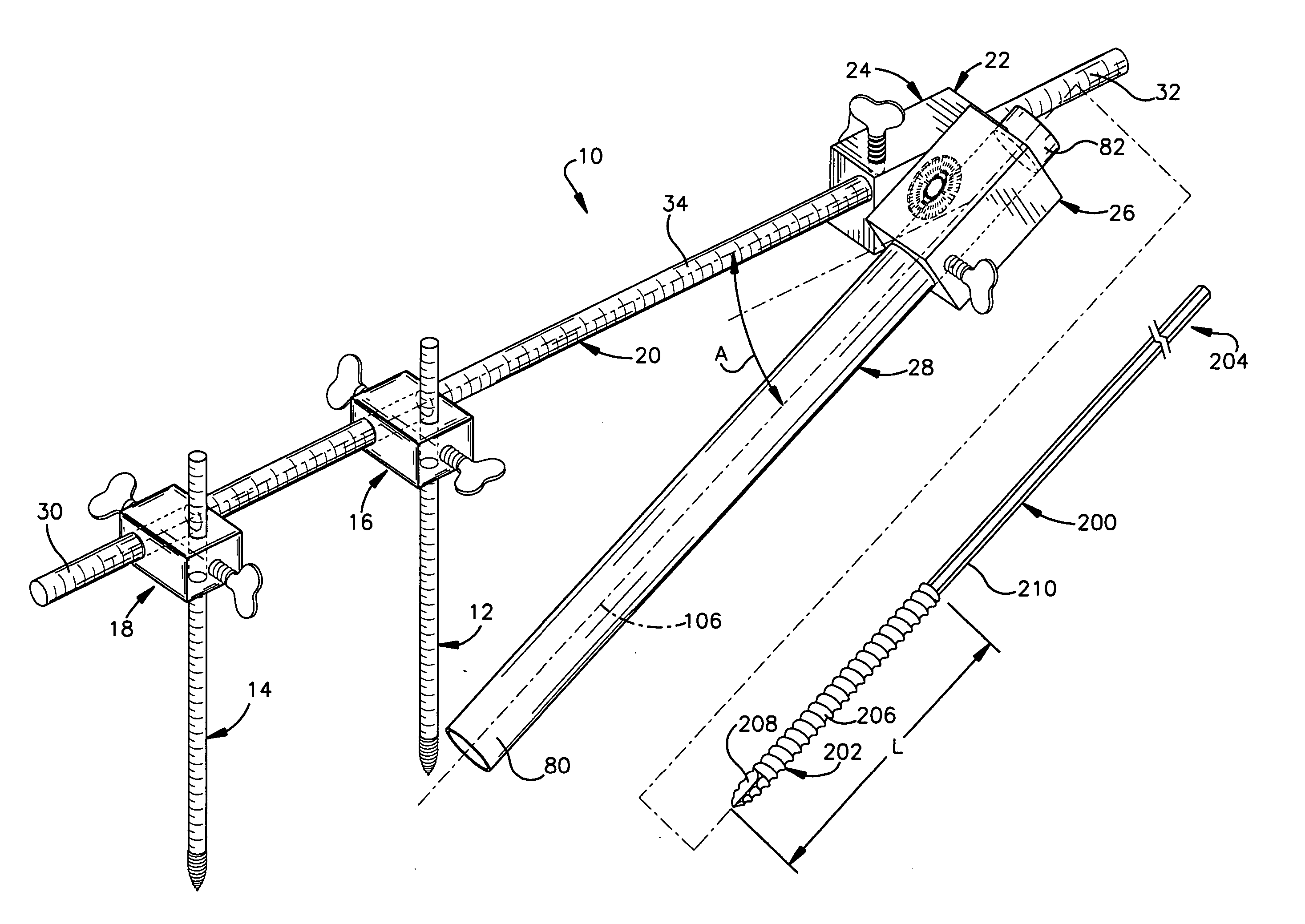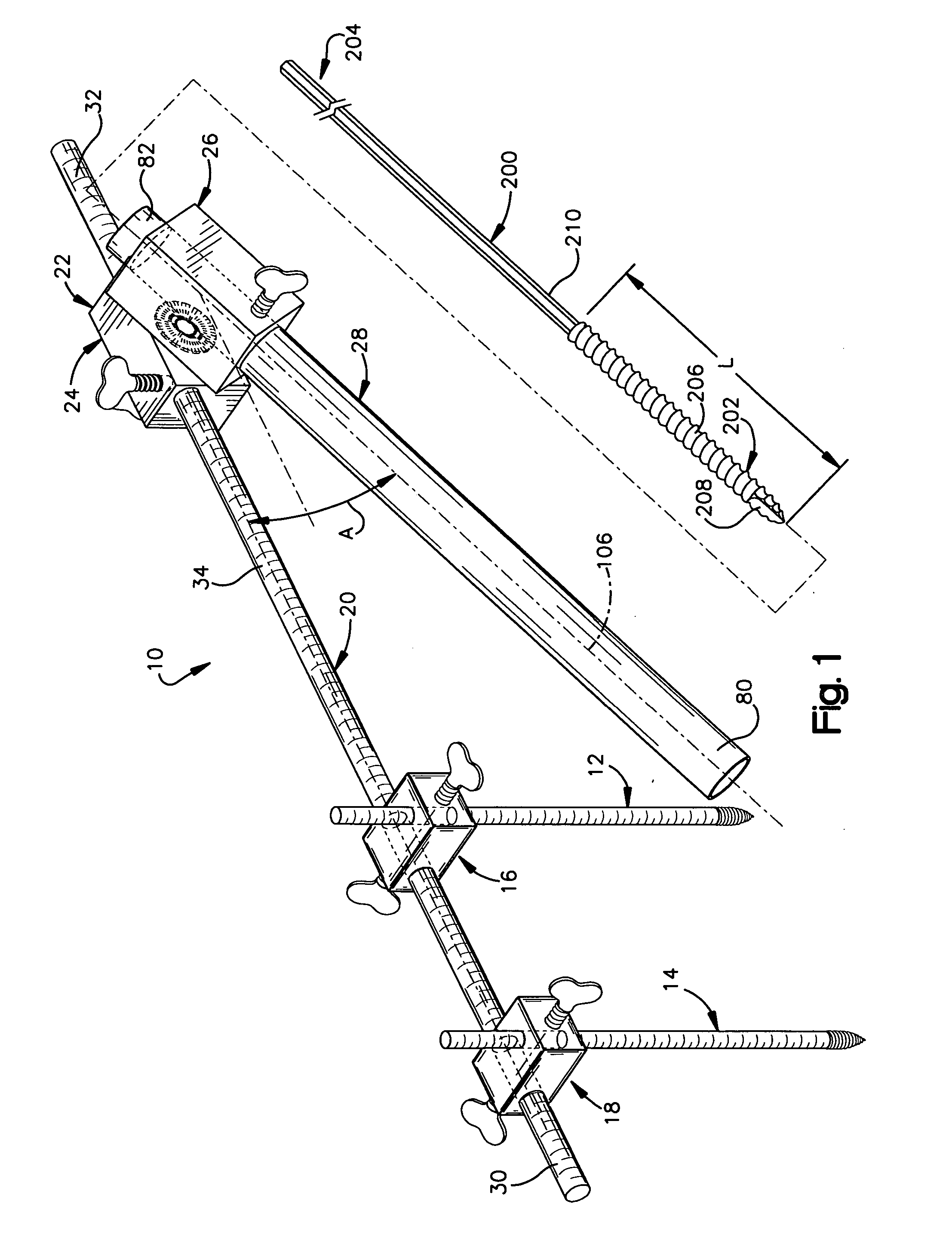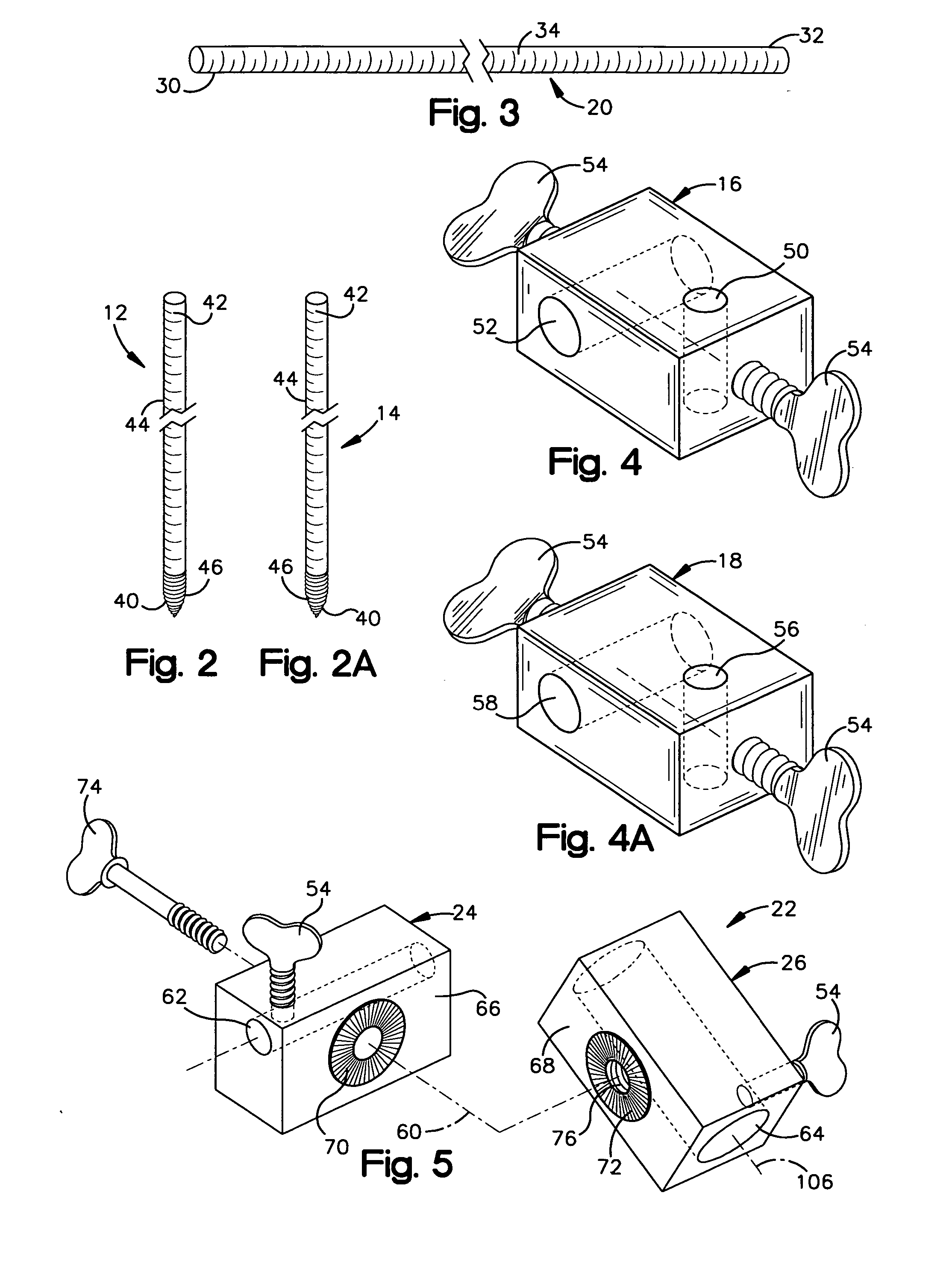Minimally invasive method and apparatus for fusing adjacent vertebrae
a minimally invasive and adjacent vertebrae technology, applied in the field of minimally invasive methods and apparatuses for fusing adjacent vertebrae, can solve the problems of pseudoarthrosis, post-operative stability, and other known spinal fixation and/or fusion procedures can be quite invasive, traumatic and time-consuming,
- Summary
- Abstract
- Description
- Claims
- Application Information
AI Technical Summary
Benefits of technology
Problems solved by technology
Method used
Image
Examples
Embodiment Construction
[0047] The present invention relates to a minimally invasive method and apparatus for fusing adjacent vertebrae. As representative of the present invention, FIG. 1 illustrates an apparatus 10 comprising first and second Kirschner wires 12 and 14 (commonly referred to as “K-wires”), first and second fixation blocks 16 and 18, a rod member 20, a swivel block assembly 22 comprising first and second block members 24 and 26, a cannula 28, and at least one removable screw 200.
[0048] As may be seen in FIG. 3, the rod member 20 is a cylindrical component that may be hollow or solid and is made from any suitable metal or plastic. The rod member 20 has oppositely disposed first and second ends 30 and 32 and an outer diameter of 4 to 7 mm. The rod member 20 includes an outer surface 34 with graduations for measuring axial distances along its length. It is contemplated that other means for measuring axial length along the rod member 20 could also be used.
[0049] The first and second K-wires 12...
PUM
 Login to View More
Login to View More Abstract
Description
Claims
Application Information
 Login to View More
Login to View More - R&D
- Intellectual Property
- Life Sciences
- Materials
- Tech Scout
- Unparalleled Data Quality
- Higher Quality Content
- 60% Fewer Hallucinations
Browse by: Latest US Patents, China's latest patents, Technical Efficacy Thesaurus, Application Domain, Technology Topic, Popular Technical Reports.
© 2025 PatSnap. All rights reserved.Legal|Privacy policy|Modern Slavery Act Transparency Statement|Sitemap|About US| Contact US: help@patsnap.com



